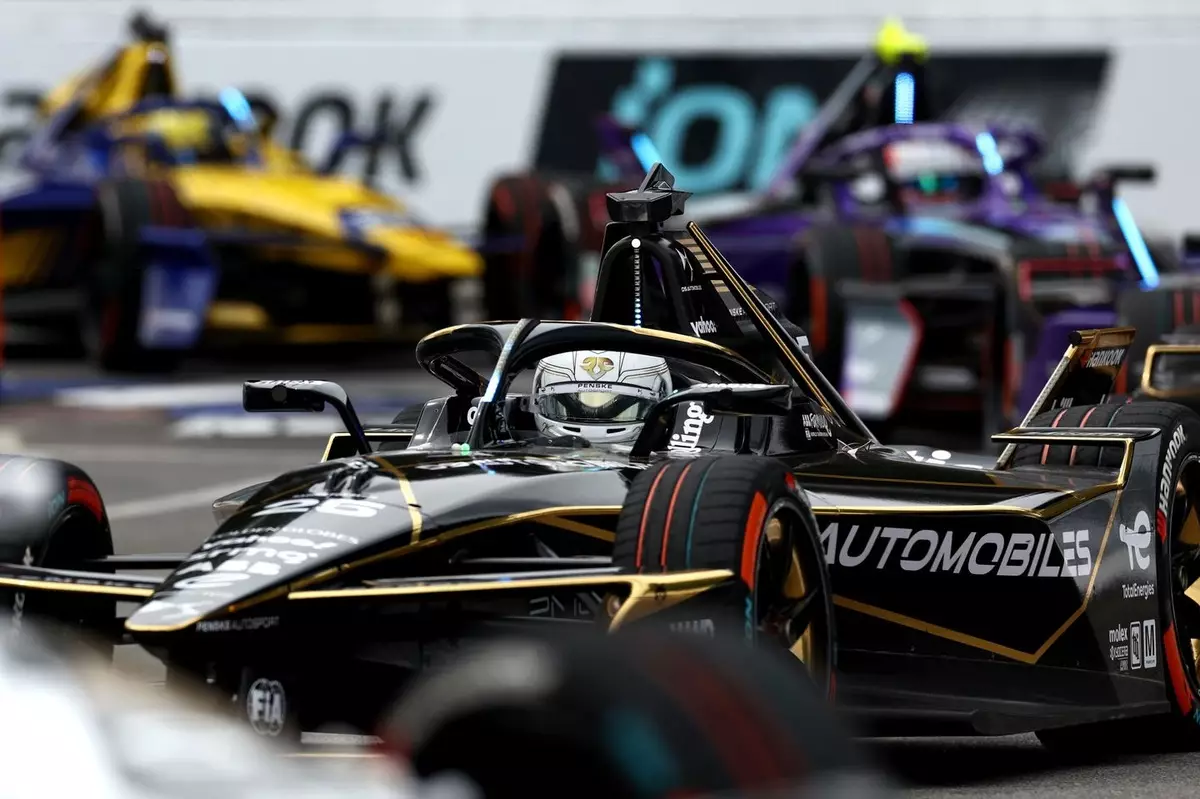The dynamic world of Formula E is set to witness a significant shift as the much-anticipated Pit Boost feature makes its debut at the Jeddah E-Prix. While this innovation aims to enhance the racing experience, it also raises pertinent questions about the implications of such changes, particularly concerning race strategy, fairness, and potential outcomes influenced by chance.
This season, the introduction of the Gen3 Evo vehicle marks a pivotal advancement in Formula E’s technical evolution. The move to a four-wheel-drive system, coupled with the deployment of softer Hankook tires, is not merely an upgrade; it represents a strategic overhaul. The results are already evident, with lap times showing dramatic reductions—by nearly three seconds in São Paulo and 2.3 seconds in Mexico. These improvements not only enhance the spectacle but also redefine the competitive landscape.
The long-awaited Pit Boost, which allows for a 10% battery recharge at a staggering 600 kW during designated pit stops, aims to intensify the competition further. However, the complexity of implementing this feature raises several questions among competitors and fans alike. A mandatory pit stop taking around 30 seconds introduces a new layer of strategy to the races, where timing will be crucial, especially in relation to the safety car and race leader dynamics.
Jean-Eric Vergne, a two-time champion, voiced concerns about the potential chaos during races due to these new regulations. He speculates about critical scenarios where the race leader could tumble down the order, potentially facing the grim prospect of being one lap down if a pit stop coincides unfavorably with a safety car deployment. His warnings reflect a common apprehension among drivers that such game-changing elements could dilute the clarity of racing outcomes.
“The pit stops are lengthy, and there’s a possibility that while the leader is in pit lane, a safety car could disrupt the standings dramatically,” Vergne expressed. This unpredictability he references represents a significant departure from the established racing norms where skill and strategy predominately determined results. When luck becomes a central player in the outcome of races, the integrity of the sport risks being undermined.
The revised Attack Mode, which has been amplified by the introduction of all-wheel drive, is another aspect of this season’s changes that requires careful examination. Drivers like Vergne have identified the disparity this creates in competition, particularly when bad luck strikes. When a driver activates this performance-boosting feature only to have it negated by a full-course yellow, the impact on race strategy can be severe. This not only damages individual races but potentially impacts the championship landscape as competitors lose viable positions due to factors beyond their control.
“Activating Attack Mode at an inopportune moment can be disastrous for race strategy,” Vergne lamented, referring to his recent experiences. With so much effort and precision invested into refining race tactics, it is undeniably frustrating for drivers when external variables play such a decisive role in their success.
In addressing these challenges, both Vergne and other seasoned competitors, such as Sebastien Buemi, underscore the urgency for regulatory adaptations to ensure fairness in competition. The balancing act between innovating for excitement and maintaining competitive integrity is delicate. The varied responses to these new features, including their potential impact on race dynamics, signal a critical moment in Formula E’s evolution.
As Formula E embraces new technologies and strategies, the implications of these changes will unfold in real-time. The anticipation surrounding the Jeddah E-Prix is palpable, but so are the concerns players in the sport have about the fine line between thrilling entertainment and maintaining a structured, fair competition. The future of Formula E lies not just in its innovations, but in how well it manages to harmonize these elements without letting luck become the determining factor on track.


Leave a Reply